The metal insets are part of Montessori Language curriculum.
This eye-catching materiel, is polyclonal of ten flat metal squares that have two components and ten shapes (square, triangle, circle, rectangle, trapezoid, pentagon, curvilinear-triangle, quatrefoil, ellipse ).
Child learns to accurately and carefully control a pencil.
First, children trace the inside of a shape with a color pencil.
Next, they attempt to trace the outside with another color.
Finally, they fill in the shape with diagonal and horizontal lines.
After this careful preparation, many children in Montessori classroom suddenly explode into reading and writing.
Over time, the designs get more sophisticated, and children are delighted in producing elaborate art of the inset.
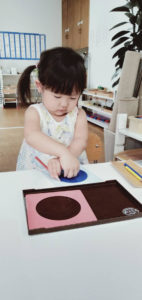
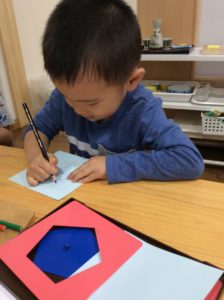
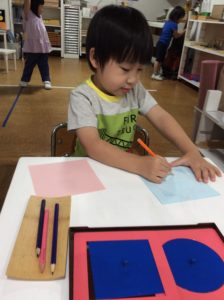
In a Montessori school, Language development is one of the four key areas.
Starting as early as in the Adventure class.
We proactively work to develop our students vocabulary with simple instruction and through a number of fun games.
Such as “I spy”, “Simon says, What’s the time Mr. Wolf? Etc ..
Dr. Maria Montessori discovered young children go through certain sensitive periods.
The Sensitive period for language starts early.
Three year olds are fascinated with the sounds of language.
The feeling of touching a letter, the movement of forming a letter.
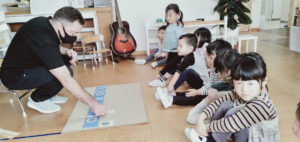
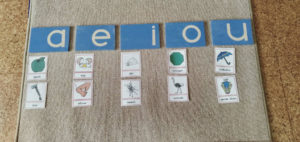
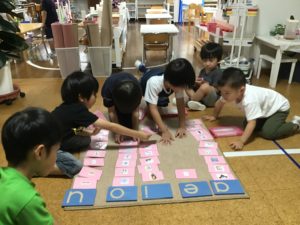
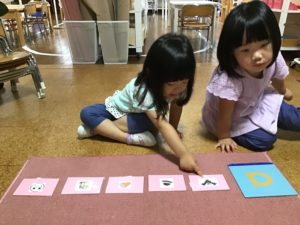
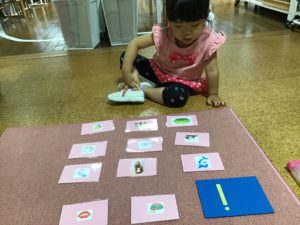
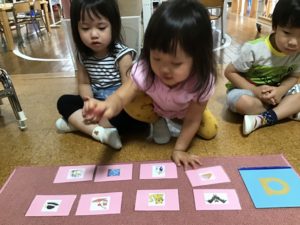
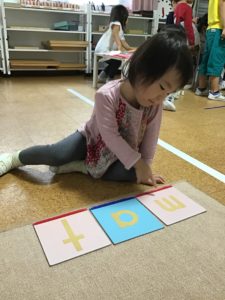
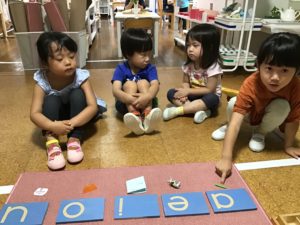
They have an appropriately mind and learn vocabulary and sight words much more easily than later on in the elementary school.
They love repetition, which is critical for learning to read and write.
In the carefully prepared environment and with the right materials, most preschooler’s eagerly learn to read and write often long before they enter first grade.
From the earliest ages, our children learn to listen carefully.
We teach the children names of objects, isolate the beginning sounds and ending sounds.
Sound games teach words which are made up of sounds, which later get associated with the written symbol: THE LETTERS ..
Montessori children also work on developing vocabulary.
For example Challenger, Matching animals objects with picture cards.
Adventure learns the names of pictures and matches with the letters to initial sounds, matching ocean animals with picture cards and pairing fruits and say it verbally as below.
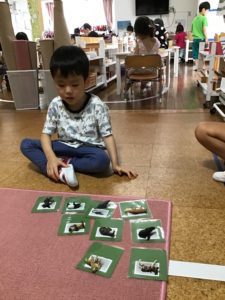
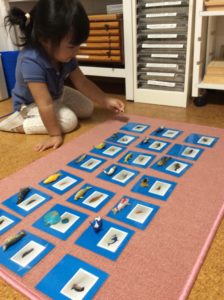
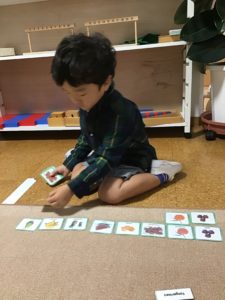
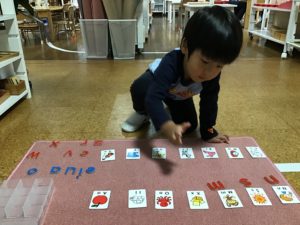
Many of the practical life exercises serve to strengthen their fingers.
They work on the three-finger grip and improve fine motor skills necessary for writing.
The sensorial exercises help students recognize shapes from circles to leaves.
Children also learn a light touch, critical for writing.
They learn how to listen carefully, with a sustained concentrated attention.
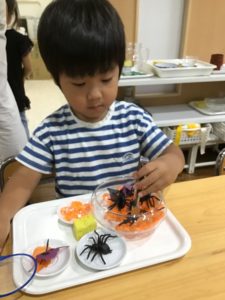
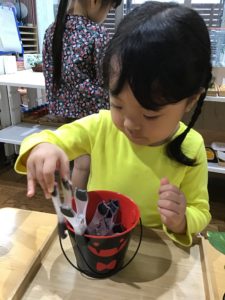
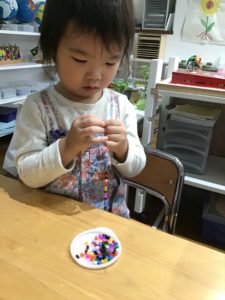
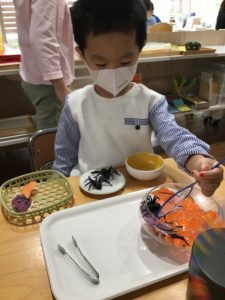
Sensory play includes any activity that stimulates child’s sensors: touch, smell, taste, movement balance, sight and hearing.
Also facilitates exploration and naturally encourage children to use scientific process while they play, create, investigate and explore.
It helps language development, cognitive growth, fine gross motor skills and problem solving skills.
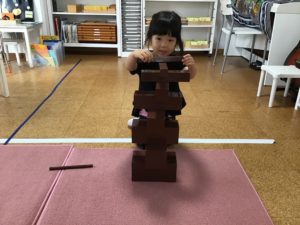
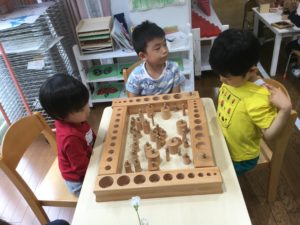
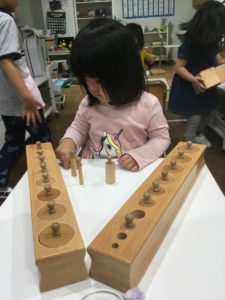
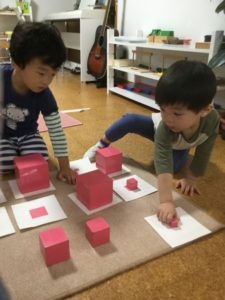
Matching, beginning sounds with picture cards and play the I spy, games with sounds and object’s. (Letters)
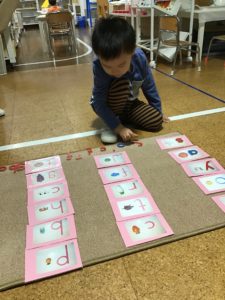
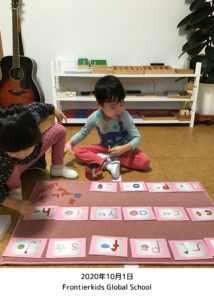
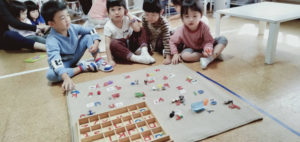
Once the student is ready, we introduce the three key materials of learning to write and read.
With the sandpaper letters, a child learns to associate the sound with the letter shape.
Building upon the sound games, the teacher introduces the child to one letter. At a time.
She guides her to carefully trace the letter with her two working fingers.
This exercise separates learning the motor movement of forming the letter from the challenging task of holding a pencil.
As a next step, the child practices the same letter.
First in the air, then on a small chalk board.
Over time, children as young as four and a half to five learn to write beautiful letters, and whenever they have forgotten how to form a letter, they can easily go back and quickly trace them again.
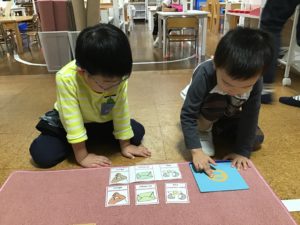
The movable alphabet, students begin to build three letter words and four-letter words.
It helps to write before they can handwrite.
They start off simple with words such as “mat” or “net”, but quickly progress to longer words of their own choosing.
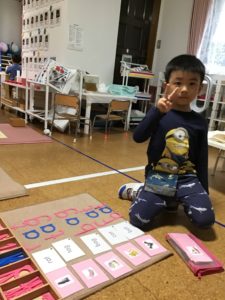
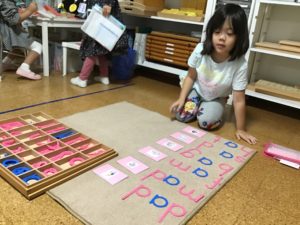
Matching, three letter words with picture cards.
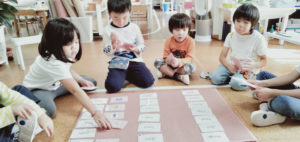
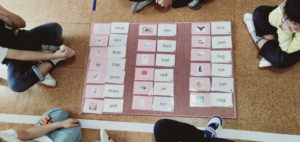
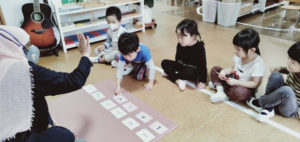
We use modified movable alphabets to learn phonograms.
Such as “pool”, “teen” and “noon.”
Later on, they progress to smaller alphabets and write entire stories with the movable letter stories that they, then can copy on to paper.
By separating the building of words and forming of letters we enable young children to be writers in the true sense of the word, being able to communicate ideas in print.
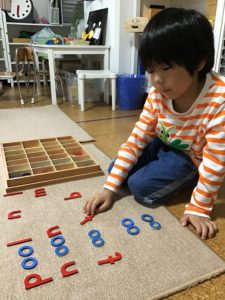
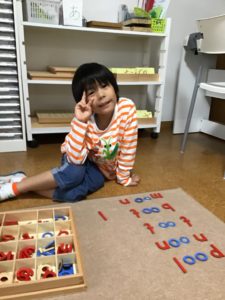
“Before we ever put a pencil in a child’s hand, those hands should dig, climb, press, push, pull, squish, twist and punch in a wide array of environments and with a variety of Montessori material and natural objects”
~ Amanda Morgan ~

